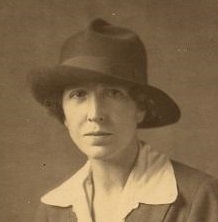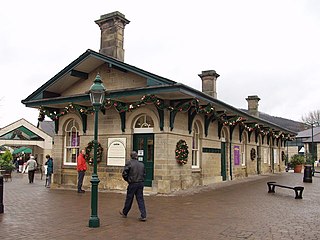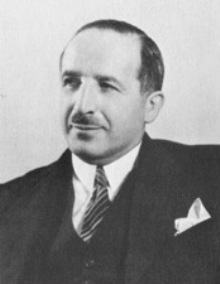
Spondon is a ward of the city of Derby. Originally a small village, Spondon dates back to the Domesday Book and it became heavily industrialised in the 19th and early 20th centuries, with companies such as British Celanese.

Bakewell is a market town and civil parish in the Derbyshire Dales district of Derbyshire, England, known also for its local Bakewell pudding. It lies on the River Wye, about 13 miles (21 km) south-west of Sheffield. In the 2011 census, the population of the civil parish appeared as 3,949. It was estimated at 3,695 in 2019. The town is close to the tourist attractions of Chatsworth House and Haddon Hall.

Matlock is the county town of Derbyshire, England. It is in the south-eastern part of the Peak District, with the National Park directly to the west. The town is twinned with the French town of Eaubonne. The former spa resort of Matlock Bath lies immediately south of the town on the A6. The civil parish of Matlock Town had a population in the 2011 UK census of 9,543.

In biochemistry, cellulose acetate refers to any acetate ester of cellulose, usually cellulose diacetate. It was first prepared in 1865. A bioplastic, cellulose acetate is used as a film base in photography, as a component in some coatings, and as a frame material for eyeglasses; it is also used as a synthetic fiber in the manufacture of cigarette filters and playing cards. In photographic film, cellulose acetate film replaced nitrate film in the 1950s, being far less flammable and cheaper to produce.

Spondon railway station serves the Spondon area of Derby, England. The station is owned by Network Rail and managed by East Midlands Railway. It is 125 miles 67 chains (202.5 km) north of London St Pancras.

Katharine Burdekin was a British novelist who wrote speculative fiction concerned with social and spiritual matters. She was the younger sister of Rowena Cade, creator of the Minack Theatre in Cornwall. Several of her novels could be categorised as feminist utopian/dystopian fiction. She also wrote under the name Kay Burdekin and under the pseudonym Murray Constantine. Daphne Patai unraveled "Murray Constantine's" true identity while doing research on utopian and dystopian fiction in the mid-1980s.

Okeover Hall is a privately owned Grade II* listed country house in Okeover, Staffordshire, England. It is the family seat of the Okeover family, who have been in residence since the reign of William Rufus. The house lies close to the border between Staffordshire and Derbyshire, which lies on the far side of the small River Dove. The Hall is not open to the public.

All Saints' Church, Bakewell, is the parish church of Bakewell, Derbyshire, England. It is a Grade I listed building.

Melbourne Hall is a Georgian style country house in Melbourne, Derbyshire, previously owned by William Lamb, 2nd Viscount Melbourne, British Prime Minister from 1835 to 1841. The house is now the seat of Lord and Lady Ralph Kerr and is open to the public. The house is a Grade II* listed building; more than twenty features in the grounds are Grade I listed.
Major General Garnet Burk Hughes was a Canadian military officer during the First World War. Although he had shown promise as a cadet officer and was politically well-connected, he was judged not to be an able combat officer and, in the latter half of the war, was shunted away from the front lines to administrative roles.

Derwent Power Station is a mothballed 214MWe gas-fired power station on Holme Lane near Spondon in Derby, England. It is built on the site of the former Spondon Power Station

Bakewell railway station was a railway station built to serve the town of Bakewell in Derbyshire, England, by the Midland Railway on its extension of the Manchester, Buxton, Matlock and Midland Junction Railway line from Rowsley to Buxton.

Rowena Cade (1893–1983) was the creator of the Minack Theatre in Porthcurno, Cornwall, UK.
British Celanese was a chemical company based in England. Formed in 1916, it survived as an independent company until 1957 when it became a subsidiary of Courtaulds.

The original Rowsley railway station was opened in 1849 by the Manchester, Buxton, Matlock and Midlands Junction Railway to serve the village of Rowsley in Derbyshire.

Camille Edouard Dreyfus was a Swiss chemist. He and his brother Henri Dreyfus invented Celanese, an acetate yarn. He founded The Camille and Henry Dreyfus Foundation in honour of his brother.

Henri Dreyfus was a Swiss inventor of the modern weaving loom. He and his brother Camille Dreyfus also invented Celanese, an acetate yarn.

The Malt Shovel is a Grade II listed public house at Potter Street, Spondon, Derby. The pub is known for its unmodernised period interiors and internal design.

This is a list of scheduled monuments in the City of Derby unitary authority in the English county of Derbyshire.
Spondon is an electoral ward in the city of Derby, England. The ward contains 17 listed buildings that are recorded in the National Heritage List for England. Of these, one is listed at Grade I, the highest of the three grades, one is at Grade II*, the middle grade, and the others are at Grade II, the lowest grade. The ward contains the former village of Spondon, which is now a suburb to the east of the centre of Derby. The listed buildings are all near the centre of the original village. Most of them are hhouses, cottages and associated structures, and the others include a church, a public house, a boundary post, a group of almshouses, and a school.




















